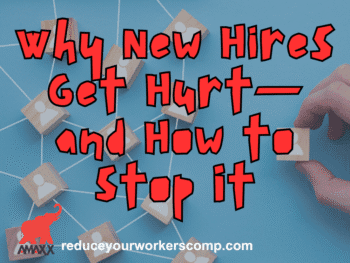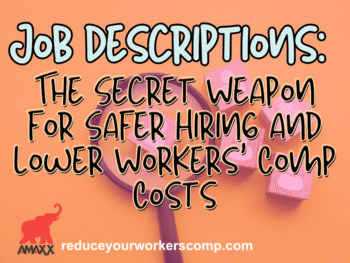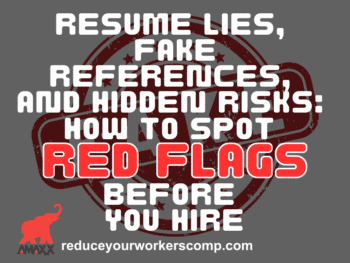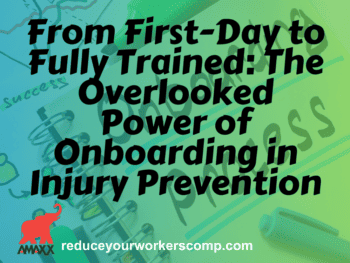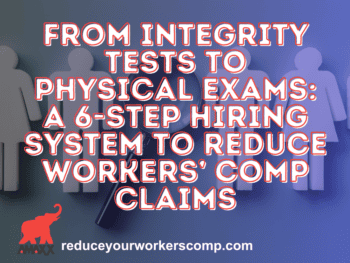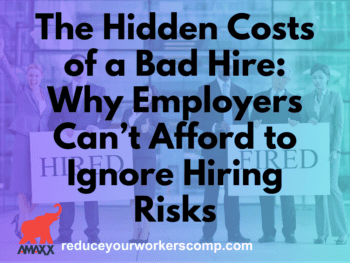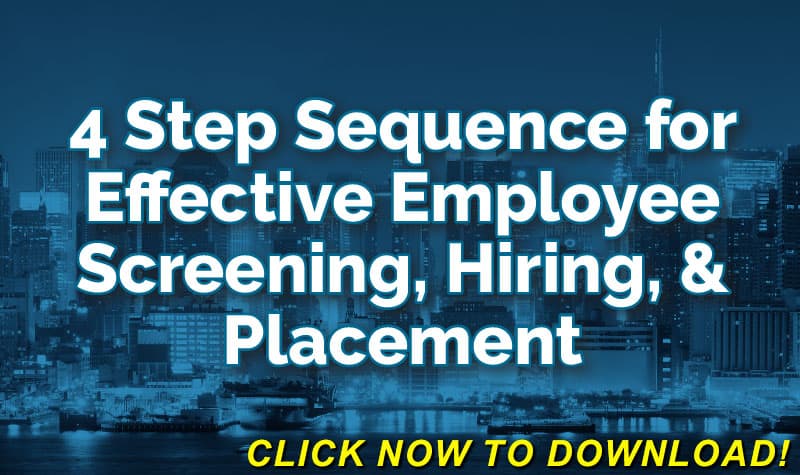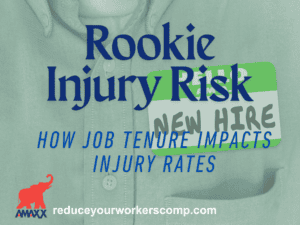
Why New Hires Face the Greatest Risk
The data is striking: employees in their first month on the job are 4 to 6 times more likely to experience a work-related injury than their coworkers with over a year of experience. This surge in injury frequency makes tenure of less than one year the single most significant predictor of work-related injuries.
But why is this group so vulnerable?
The answer lies in a mix of inexperience and unfamiliarity. Employees new to their roles often face tasks that are new, complex, or physically demanding—sometimes all three. Without the benefit of muscle memory, instinctive hazard recognition, or a thorough understanding of safety protocols, they’re at a much higher risk.
Click Link to Access Free PDF Download
“4-Step Sequence For Effective Employee Screening, Hiring, & Placement”
The Cost of Inexperience
It’s not just the frequency of injuries that spikes among newer workers—the costs of these injuries are also substantially higher. Workers with less experience show 2 to 4 times the loss cost relativity, meaning the financial impact of their injuries is significantly greater. This includes direct medical expenses and wage replacement, as well as indirect costs like lost productivity and training replacements.
Age, Sex, and the Nuances of Injury Severity
The study also highlighted important demographic nuances:
-
Inexperience and age are closely correlated. Younger workers tend to be newer to the job market, but that doesn’t make them the only risk group.
-
Injury severity increases with age. Regardless of tenure, older workers experience more severe injuries.
-
New older workers are at particularly high risk, with a steeper injury curve compared to younger new hires.
-
Male employees new to a job are at especially high risk, showing higher injury rates compared to their female counterparts.
What Employers Can Do
Understanding these patterns is the first step to mitigating risk. Employers can take proactive measures such as:
-
Implementing robust onboarding safety training
-
Providing close supervision during the first 90 days
-
Gradually introducing high-risk tasks
-
Pairing new workers with experienced mentors
-
Conducting regular check-ins during the first year
Reducing injury frequency among new employees doesn’t just protect workers—it also directly impacts the bottom line by lowering claim frequency, severity, and experience modification factors (E-Mods).

Contact: mstack@reduceyourworkerscomp.com.
Workers’ Comp Roundup Blog: http://blog.reduceyourworkerscomp.com/
Injury Management Results (IMR) Software: https://imrsoftware.com/
©2025 Amaxx LLC. All rights reserved under International Copyright Law.
Do not use this information without independent verification. All state laws vary. You should consult with your insurance broker, attorney, or qualified professional.

